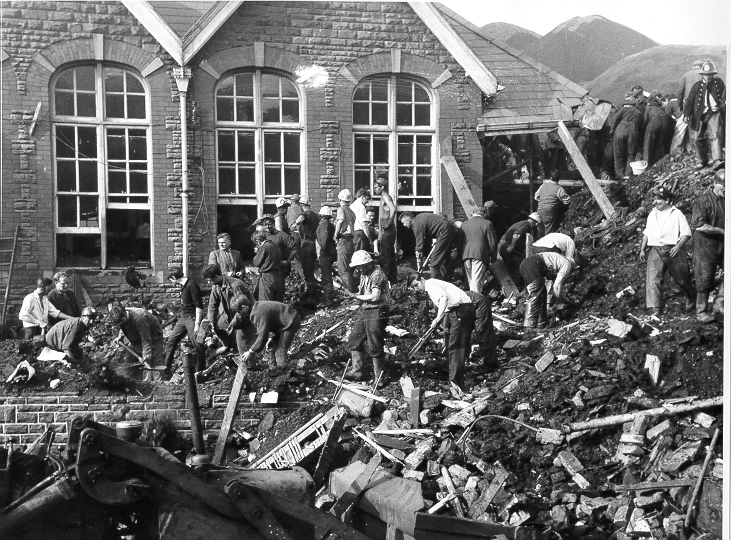The Tragedy and The Shame of Aberfan
THERE are some events in our modern history that become known by one word.
Dunblane. Hungerford. Hillsborough. Zeebrugge. Munich. Llandow. Kegworth.
These place names are forever associated with disaster and horror, with grief and pain, but also with courage and the triumph of the human spirit.

So it is with Aberfan.
Fifty years ago tomorrow a fate so awful as to be almost unimaginable befell a village in the South Wales coalfields.
A generation was wiped out shortly after 9.15am on October 21, 1966, as more than a million cubic feet of liquified mining waste poured from the mountainside into Pantglas Junior School and surrounding houses.
Just as it is this year, October 21 was a Friday in 1966.
Just as it is this year, it was the last school day before the half-term holidays.
In a matter of seconds, 116 children and 28 adults were dead.
A few minutes earlier and the children of Aberfan would not have been at their desks.
A few hours later and they would not have been in school.
That it happened is a defining tragedy in Welsh history.
That it was allowed to happen remains a national scandal.
The pain for those who lost loved ones, or who survived, or who took part in the heroic rescue efforts, last forever.
The various television documentaries and newspaper features this week will have brought back many horrible memories for anyone old enough to remember the disaster.
For those of us too young to remember Aberfan, this week’s media coverage has been almost unbearable to watch.

The Aberfan streets visited by horror were no different to hundreds of streets across the South Wales valleys.
Pantglas school was no different to many similar Victorian school buildings across the area; indeed, no different externally to many school buildings still in use today.
I have a son in primary school roughly the same age as many of those killed at Aberfan. I have a son who is a primary school teacher and roughly the same age as some of the teachers who lost their lives.
To imagine being in the position of the parents of the lost generation of Aberfan is impossible.
In some streets there were as many as five grieving families.
Coalfield communities were used to the dangers of the mines. Lives were claimed by the pits on an all too regular basis.
But not this. Not children killed at their school desks.
The scandal of Aberfan is that these people then had to fight the authorities for justice.
The National Coal Board led by its odious chairman Lord Robens attempted to absolve itself of any blame, claiming it was a ‘natural disaster’.
In truth, the NCB had been warned more than once about the potential dangers of the waste tips above Aberfan.
Even after a lengthy tribunal laid the blame squarely with the NCB and its “bungling ineptitude”, there was no punishment or prosecutions of those responsible for piling huge amounts of mining waste on top of known natural springs.
If Aberfan happened today, it would result in prosecutions for corporate manslaughter.
There is no doubt in my mind that the NCB literally got away with murder on October 21, 1966.

Villagers even ended up having to pay for the removal of the tip from the disaster fund set up to help them. The money was not repaid to the fund until 1997.
Imagine that. Grief-stricken parents had to pay for the removal of the tip that killed their children.
That the people and parents of Aberfan took their grief and anger and used it a achieve justice is a tribute to them and a condemnation of those in authority at the time, including a largely subservient national press which should have done far more to hold to account those who were responsible.
Tomorrow’s 50th anniversary of the Aberfan disaster placed a focus on what happened in 1966.
But the horrors of that day and the injustices that followed should never be forgotten no matter how far away from them the passage of time takes us.
















